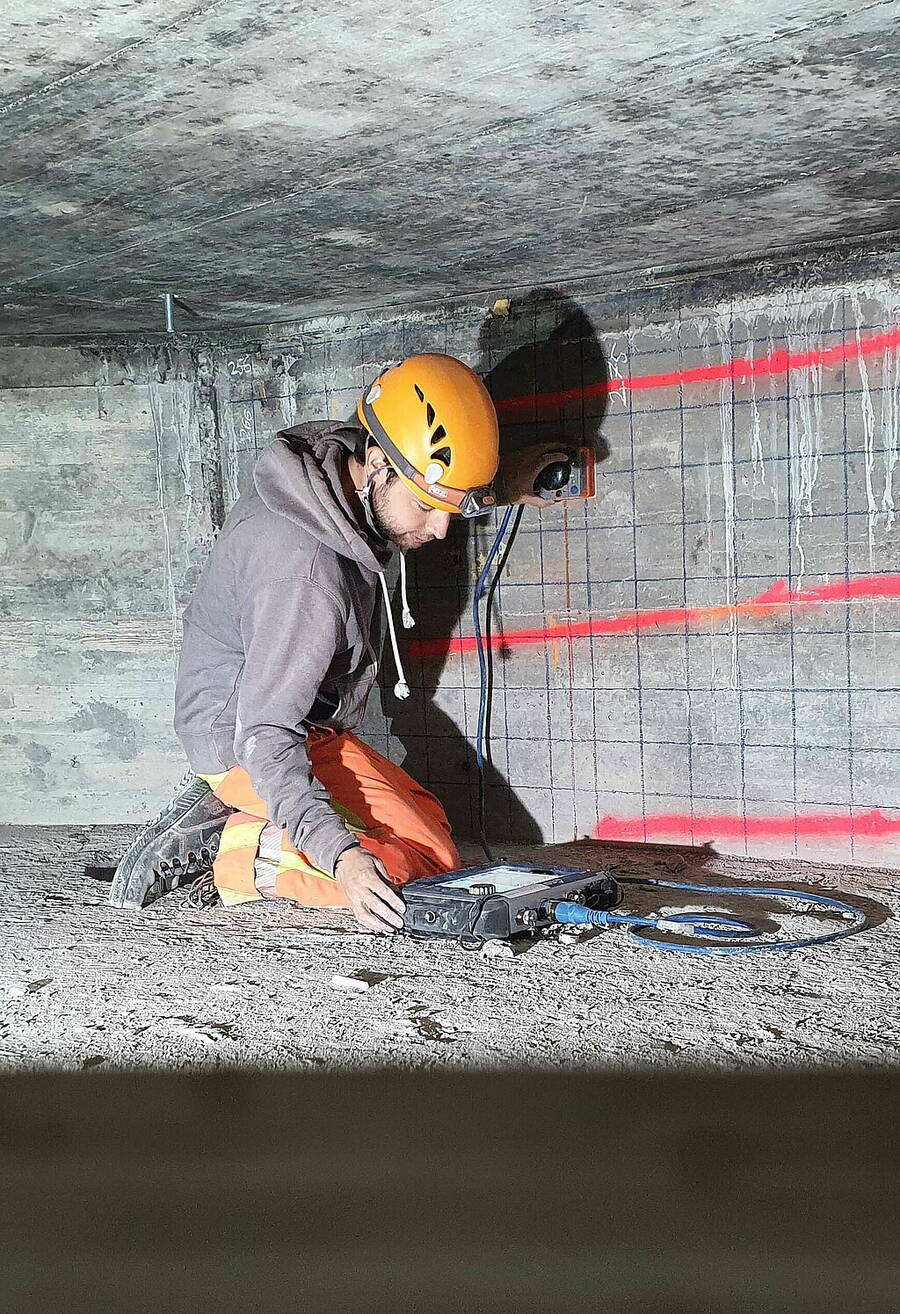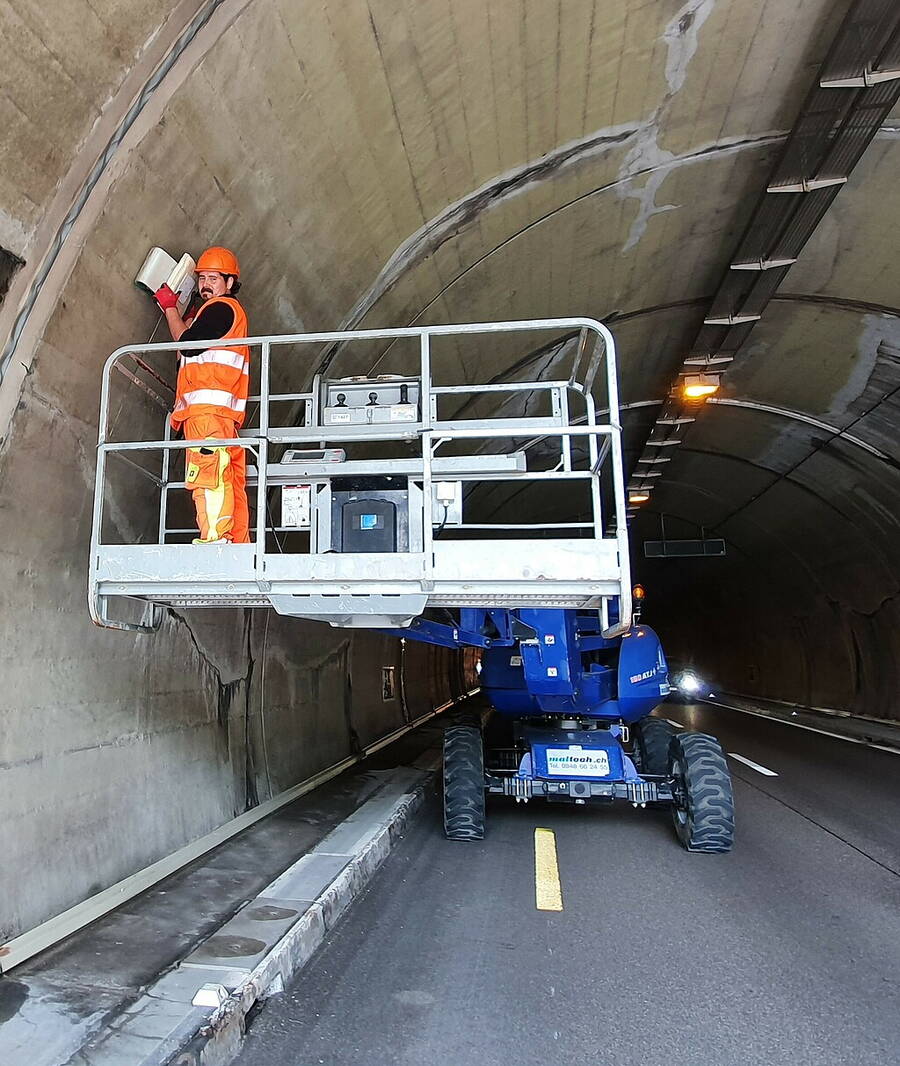competencies
Non-destructive testing
We offer you support with various non-destructive tests for your structures.

Impulse radar
Originally intended for exploration of the uppermost layers of the Earth (known as Ground Penetrating Radar, GPR), this reflective testing method, which is similar to an echo sounder, has also been used with great success in evaluations of the condition of structures. With this method, electromagnetic waves emitted by the measuring device are reflected at material interfaces within a structural component (e.g. concrete/rebar) or reflected at its far surface (e.g. concrete/air or concrete/substrate) and finally received at the surface of the building component. In this way, vertical cross-sectional images through the component, so-called radargrams, can be generated. The method can be used successfully and rapidly to locate objects embedded deep in the concrete (e.g. prestressed cables, punching shear reinforcements or pipes) or to measure layer thickness (e.g. asphalt pavement) over larger distances.
Reinforcement measurements with the alternating magnetic field method
The alternating magnetic field method is based on the principle of electromagnetic induction. This measurement method is used to detect and localise rebar in concrete down to a depth of 15 cm. Key parameters of the existing rebar can be derived from linear or area measurements (rebar spacing, concrete coverage and, if necessary, diameter estimation).
Ultrasonic pulse-echo method
Like impulse radar, the ultrasonic pulse-echo method is based on the reflection principle. However, acoustic waves are used instead of electromagnetic waves. Ultrasound is used to determine the thickness of structural components or to investigate inhomogeneities in concrete. Problem areas, such as gravel pockets, voids, and open fractures that are not visible to the naked eye and run parallel to the surface can be detected with this inspection method.
Impact-echo method
Like the ultrasonic method, the impact-echo method uses reflected sound waves. The impact of a small metal ball (Ø 2 to 25 mm) causes vibrations in the structural component. By analysing the frequency of the vibrations registered at the receiver, it is possible to determine the thickness of the component and localise defects. The impact-echo method is also used to check the grouting of post-tension cables for possible voids.
Potential field measurement
In potential field measurements, an electrical voltage difference is measured between the rebar and a reference electrode on the concrete surface. This method is used for the non-destructive detection and localisation of active corrosion points on the rebar behind large concrete surfaces. In addition, the spread of chloride contamination to the reinforced concrete (e.g. due to penetrating de-icing salt) can be mapped and quantified by combining this method with targeted sampling (chloride content measurements).
Rebound hammer
The compressive strength of the concrete (at a measured point) can be estimated from the rebound distance of a test hammer. Compared with standardised compressive strength testing in the laboratory, this method provides a quick, large-scale overview of the condition of the structural component. Furthermore, it has an advantage over core sampling in that statically important or difficult-to-access locations can also be inspected non-destructively.

